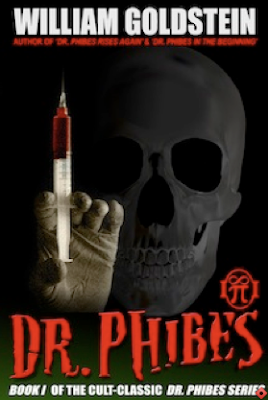Today on TKZ we’re thrilled to host Robert Gregory Browne, whose latest novel TRIAL JUNKIES is an Amazon #1 Hot New Release.
I practically had to be pulled kicking and screaming into self-publishing.
I came into the book world through the traditional route and was conditioned to believe that the only way into the industry was to write a book, look for an agent, have that agent submit the manuscript and pray that a publisher accepted it.
Once I managed to get past that particular obstacle, I thought the only way to stay in the industry was to write the books my publisher wanted me to write and regularly meet my deadlines.
So when I heard that a few authors had decided to take advantage of the so-called Kindle revolution and start self-publishing ebooks, I thought they had completely lost their minds. Did they really think they could make a living selling books for three or four bucks on Amazon?
Surely they had to be nuts.
But an odd thing started to happen. Several of my friends who had decided to take the leap were actually starting to see their incomes rise. Not dramatically, but this was certainly proof that it was possible to, at least, supplement your income with self-publishing sales.
Yet, I remained on the fence. Not fully convinced that self-publishing was the way to go.
I’m not a particularly greedy guy, but I have to say that there was one piece of news I received from a friend that made me reconsider my position. She sent me an email saying, “I made thirty thousand dollars last month in ebook sales.”
Now, to a midlist writer—even one who has managed to do this job full-time and eke out a fairly good living—that was a number that couldn’t be ignored.
Thirty thousand dollars? Surely she was either fudging the truth or I hadn’t read the email correctly. And if she was making that kind of money, she had to be an anomaly.
Or did she?
I soon started to get reports from other self-publishing friends that they were making ten, twenty, thirty, even forty thousand dollars a month selling ebooks on Amazon.
How could this be possible? I wondered. If I were to self-publish a book would I ever manage to earn that kind of loot? Because, let’s face it, few people go into the authoring business to make money. We midlisters are used to modest advances and modest sales. And most are forced to do the job part-time because their royalties just aren’t high enough.
I went to my financial advisor and I said, “Can you believe that some of my friends are making thirty or forty thousand dollars a month through self-publishing?”
He immediately nodded his head and said, “Sure. What you’re seeing is the cut the publisher usually takes.”
Well, folks, greedy or not, I didn’t need much more convincing. I was already in the midst of writing a new book and decided somewhere around the third act that I needed to forego shopping it around and self-publish the sucker. That book was called TRIAL JUNKIES and I launched it about three weeks ago by offering it for free and giving away 46,000 copies.
And I’m happy to report that a few days after the giveaway, TRIAL JUNKIES hit the Top 100 in Kindle Books and became the #1 bestselling legal thriller on Amazon. As of this writing, it’s still there and I’m keeping my fingers (and toes and eyes) crossed that it sticks around for a while.
Over a period of a few months, I’ve gone from skeptic to firm believer. Not merely because of financial potential, but because I’ve never felt so in control of my own destiny. I wrote the book that I wanted to write, on my own terms, and handled every aspect of its release from formatting to cover design. That’s the kind of control that no author gets in the traditional publishing world.
Will everyone who self-publishes be as lucky as I’ve been? Probably not. But the odds in the traditional publishing world are no better.
These are new, scary times we’re living in and I can’t yet say that I’m a success at self-publishing—only time will tell that.
But at this point I’m loving every second of it…
Robert Gregory Browne began his career by selling a two-part mystery story, NOTHING BUT THE COLD WIND, to EasyRiders magazine. After more than a decade as a screenwriter, Browne shifted his focus to his first love, novels, and wrote KISS HER GOODBYE, which recently served as the basis for a CBS Television series pilot, starring Dylan Walsh and Terry Kinney.
Rob’s subsequent books are the thrillers TRIAL JUNKIES, WHISPER IN THE DARK, KILL HER AGAIN, DOWN AMONG THE DEAD MEN and THE PARADISE PROPHECY (as Robert Browne).























